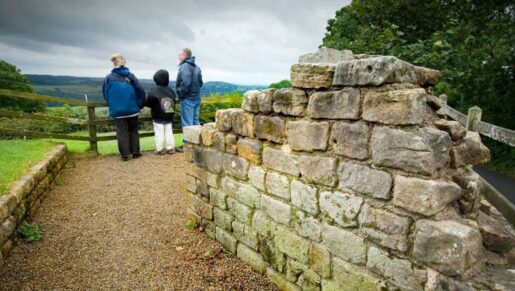
Haltwhistle
Start Exploring
A main stopping point for visitors to Hadrian’s Wall, Haltwhistle is a small, welcoming town in the west of Northumberland served by the A69 Newcastle to Carlisle road and the Tyne Valley rail line.
Today Haltwhistle is a popular tourist destination which markets itself on being the ‘Centre of Britain’ and is also a main stopping point for visitors to Hadrian’s Wall.
The area surrounding Haltwhistle has been populated since Roman times and the town is apparently mentioned in the Domesday Book and one of the original spellings of the town’s name Haut Whysile means high boundary.
The parish church is Holy Cross and is believed to date from the 9th century. Its earliest mention appears to be in a grant of 1178 by William the Lion of Scotland to the Abbey of Arbroath. The church also has a 7th century water stoup believed to have been used by St Paulinus.
In 1306 Edward I granted a charter to the town after his stay there on his way to fight the Scots. A market is still held on a Thursday.
During the medieval period Haltwhistle like many other towns on the English-Scottish border was subject to much feuding and raiding. A castle was constructed and several houses were fortified against these border raids. The former has long since disappeared and of the latter, Haltwhistle Bastle, now demolished was situated at the bottom of Castle Hill and there are remains of a pele tower in the Centre of Britain Hotel in the market place.
In more recent centuries, the railway came to Haltwhistle in the 1830s with the building of the Newcastle to Carlisle railway. This replaced a scheme to build a canal between the two towns.
In 1801 the population was 453 and by 1851 this had risen to 1420.
This dramatic increase in population can be said to be due to the coming of the railway and the industry that subsequently sprang up. From the 18th-early 20th centuries Haltwhistle’s industries included mining, farming, woolen mills, breweries, brickworks and limekilns.





